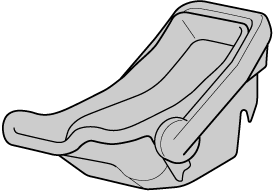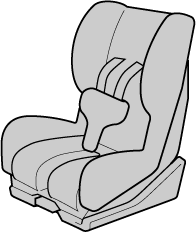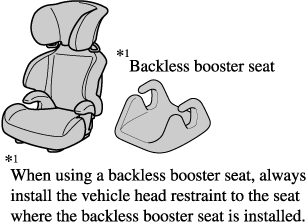

Child-Restraint System Types
In this owner's manual, explanation of child-restraint systems secured with seat belts is provided for the following 3 types of popular child-restraint systems: baby seat, child seat, booster seat.
-
Installation position is determined by the type of child-restraint system. Always read the manufacturer's instructions and this owner's manual carefully.
-
Due to variations in the design of child-restraint systems, vehicle seats and seat belts, all child-restraint systems may not fit all seating positions. Before purchasing a child-restraint system, it should be tested in the specific vehicle seating position (or positions) where it is intended to be used. If a previously purchased child-restraint system does not fit, you may need to purchase a different one that will.
Baby seat
A baby seat provides restraint by bracing the baby's head, neck and back against the seating surface.

Child seat
A child seat restrains a child's body using the harness.

Booster seat
A booster seat is a child restraint accessory designed to improve the fit of the seat belt system around the child's body.

(Australia)
Child-restraint systems for Australia must conform to Australian Standard AS 1754/91 or later.
(Other countries)
Please comply with the legal regulations concerning the use of child-restraint systems in your country.




